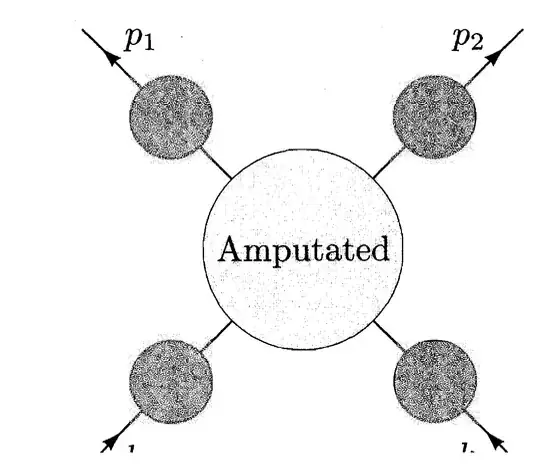In Peskin & Schroeder's book (chapter 7.2,p227), they claim that the exact 4-point function, expressed by $$ \left( \prod_{i=1}^{2} \int d^4 x_i \, e^{i p_i \cdot x_i} \right) \left( \prod_{i=1}^{2} \int d^4 y_i \, e^{-i k_i \cdot y_i} \right) \langle \Omega | T \{ \phi(x_1) \phi(x_2) \phi(y_1) \phi(y_2) \} | \Omega \rangle \tag{p.227} $$ can be translated into the diagram (Fig. 7.4)
My question is: How do we derive the diagram in the picture solely from the exact 4-point function above?
I try to understand this using the diagrammatic interpretation of 4-point function in position space, but I fail because all diagram in position space end at some point and I cannot related them to the diagram in momentum space.
This question can be seen as a follow up question of this one, they are related, but this question focus more on the diagrammatic interpretation of the problem.
